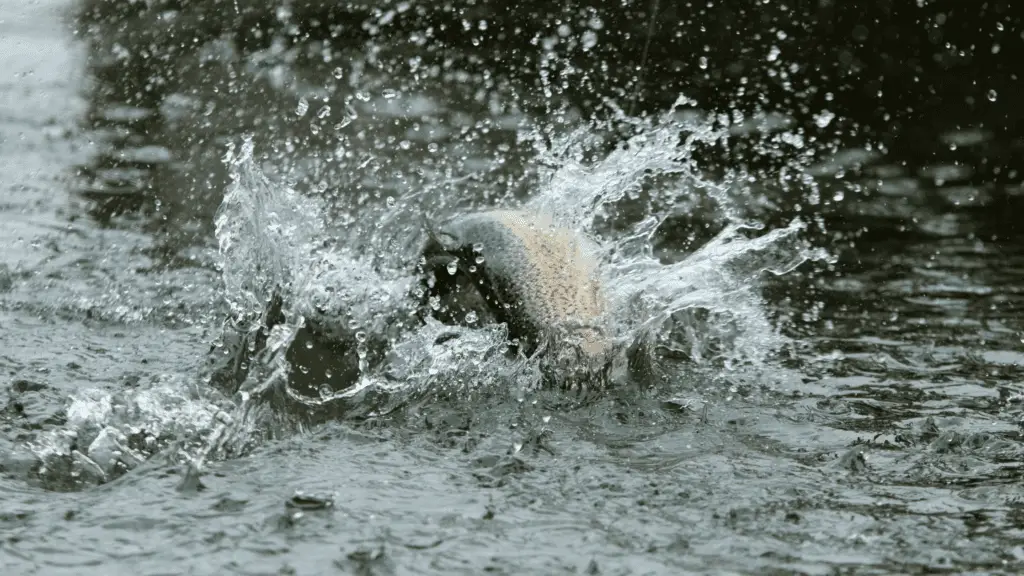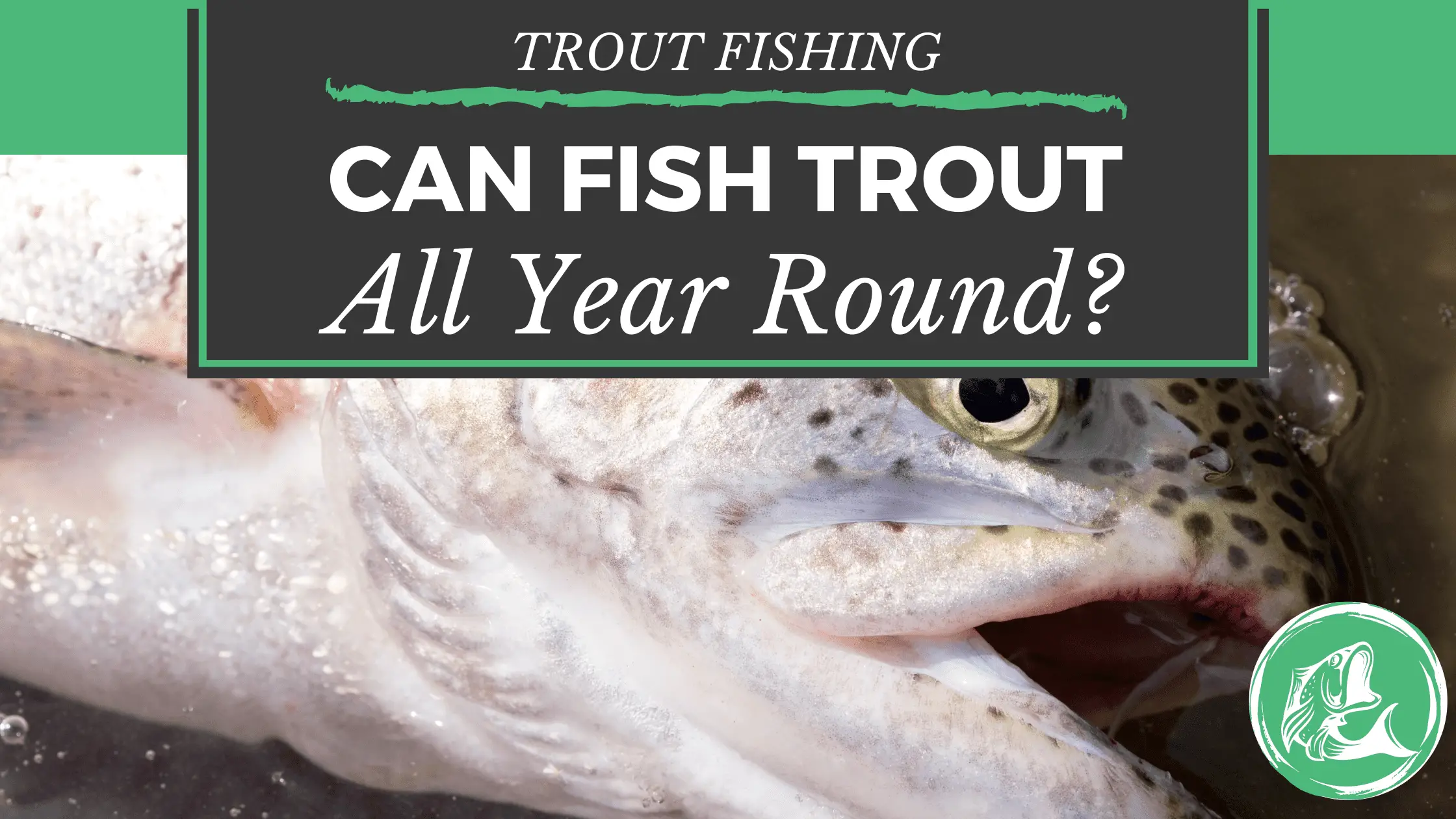Trout fishing is an all-American pastime favorite that’s why many ask “Can you fish trout all year round?”. There’s that thrill to catching this lovely and lively fish that’s impossible to explain. Despite trout being available all year round in the U.S, the best ones are hard to catch. Those new to this sport will need to research for results.
You can catch trout all year round in any water where there’s a lot of stockfish. But you can still greatly improve your chance of success when you consider the time of year, the day, and the water temperature. According to many trout fishing enthusiasts, the best time to catch trout is late spring. This season is also the best time to find large, healthy fish.
Just like many game fish, trout avoids areas where there are many anglers. As water becomes warmer, the surrounding brush and grass become thicker as the water level decreases. Many anglers say that trout avoids these areas as well. Get more out of trout fishing this year with the latest tips and techniques; let’s start!
When is The Best Season To Catch Trout?
According to Takemefishing.org, different trout live in different habitats with optimal temperatures, time of day, and seasons for fishing. Generally, trout is available all year. But during spring, there are large schools of fish navigating through shallow and deep waters.
Springtime Trout Fishing
- Evasive fish – Trout hides from anglers during warm water. These fish are smart enough to avoid thicker grasses and brushes and areas where there’s a lower water level. Still, they may be tempted to swim where there are a lot of worms and insects.
- Bigger fish during springtime – You’ll catch larger trout during spring compared to other seasons of the year.
- Test air pressure – If you feel that air is too warm or too cold, it’s likely that trout feels the same way. Trout are cold-blooded, and hence, their body temperatures are similar to the temperature of the water they are in.
- Test water temperature – trout behavior is affected by water temperature. Although trout are wary during warm water temperatures, this is also when they are hungry and are very active. As the temperature decreases, trout becomes less likely to bite.
- Aggressive during spawning season – cutthroat and rainbow trout spawn during springtime. Thus, fish are more aggressive and will likely bite anything that they see.
Summertime Trout Fishing
Higher summertime temperatures improve fish metabolism. But as the water reaches 60 degrees Fahrenheit, trout slows down again. It’s best to look for trout in cooler waters, especially in ponds and lakes. Trout will try to find deep holes and crevices where it can stay during the warm times of the day.
- Early bird rule – Start your day early, especially on a very warm day.
- Fishing in freshwater – trout may remain in dam tailwaters or cool, spring-fed bodies of water.
- Fish in higher elevations – catch trout in bodies of water located in the mountains during the hottest days. Also, natural trout food is scarce in these areas, and thus, trout will eat anything they see.
- Check water temperatures – 68 degrees Fahrenheit water is good for trout but not for lake and brook trout. For precise measurements, use a water thermometer.
Fall Time Trout Fishing
Most anglers will keep their fishing gear once the water and air become colder. In lower temperatures, trout will slow down their metabolism and remain in their shelters rather than look for food. But trout will still come out to eat, and they will be very hungry.
- Low water areas – you’ll be closer to where trout hides when you fish in low water areas. Fish will easily see your lures and baits and come out unsuspectingly.
- Use stealth lures – Moretrout.com suggests the use of stealth lures. Avoid a huge splash as trout can become suspicious.
- Fallen leaves and twigs are great lures – bugs, flies, and ants will likely settle on these leaves and attract trout. Use lures and baits that look like bugs and grasshoppers to get great results.
Wintertime trout fishing
You’ll less likely catch trout during the winter. If you’re just not ready to brace the cold, keep your gear and wait till spring. But if you’re game, winter or not, you can still find and catch trout.
- Lazy but still biting – trout will likely remain hidden during the cold months, but it does not mean that they will not feed. Use enticing lures that look like ants, grasshoppers, and bugs.
- Keep things slow – trout will be too lazy to chase after lures, so let your bait hang around. Mimic the natural movement of insects and underwater prey as much as possible.
What Is The Best Time of Day To Fish for Trout?
Two factors affect trout fishing: existing cloud cover in the area and water temperature. Before you take out your gear, check the water temperature first. It should be from 34 to 67degrees Fahrenheit. Trout activity increases as water temperatures increase a degree higher than 40 to 49 degrees Fahrenheit. As much as possible, check the water temperature every hour. Once the temperature has reached optimum levels, take out your lures.
Cloud cover is a crucial factor in trout fishing. Trout have no eyelids, so they’re unable to dilate their pupils. With that, they look for shaded areas to stay away from the bright sun. Therefore, start fishing as there’s adequate cloud cover. Cloudy days when the water is just right are the best days. You might also consider fishing before dusk or until it gets dark, as hungry trout may still take a bite.

How to Catch Different Kinds of Trout?
Trout is available in lakes, rivers, streams, and other bodies of water. There are different strategies to catch these different types of trout.
Catching Lake Trout
Lake trout is one of the most popular and the most favorite among anglers. Take note that lakes with cooler waters offer better success. Use a depth finder to help you adjust your depth according to the season.
During summertime, lake trout is bountiful before noontime. Select a calm part of the lake to fish. Some anglers believe that lake trout remain in the deepest areas of the lake during summertime and stay there. However, this fish is also active in 53-degree Fahrenheit waters.
A depth finder will help you set up lures in 10-feet waters after wintertime. Likewise, try 35 to 45-feet deep waters in the middle of spring.
Catching River Trout
River trout fishing is mostly affected by regulations, especially when fishing in waters with wild trout populations.
Consider trout’s natural food like earthworms, canned corn kernels, and salmon roe. Cast your line upstream to make your bait look lively, like live lures. When you’re fishing in smaller rivers, use lighter lures. But when the river has strong currents, use heavier lures and baits.
After catching trout from an area, wait at least 20 minutes for more fish to show up again. Also, some baits work in certain weather conditions. When you’re fishing for trout after light or heavy rain, use fish worms. When you’re fishing during a windy day, use insects or bugs. The key is to mimic the type of food that trout naturally eats during a particular time of the day.
Catching Rainbow Trout
One of the most spectacular kinds is rainbow trout. This type of trout is also the easiest to catch if you live in North America. You will find rainbow trout in the wild in rivers and large lakes and as stocked fish.
To catch rainbow trout, use different types of lures so you can simulate different baits and fish food. Take note that trout have different food preferences. That will depend on the time of day, the kind of weather, and the season.
You can use all kinds of bait to catch rainbow trout. Use colorful spoons or playdough-like material. Move the lure in such a way that it looks like real bait.

What Are Ways to Fish for Trout All Year Round?
Trout anglers rely on time-tested techniques, science, and the right tools to catch fish. Consider the following tips.
- Check local trout fishing regulations before you plan your trip. Take note that regulations change without prior notice, so call or contact local authorities.
- Use different types of lures and baits. Bring all kinds of bait as trout may get tired of the same kind of bait or lure.
- Fish in less crowded areas. Trout will prefer to swim away from crowds and threats. Check out areas upstream when you’re fishing in the river and in clear, quiet areas when you’re in a lake.
- Always check weather forecasts. You’re more likely to have great success when the weather is fair, cloudy, and not too warm.
- Use air and water thermometers and depth finders to catch trout.
Are You Ready to Fish Trout All Year Round?
You can fish for trout all year round, but you’re more likely to find success during springtime and early summertime. Trout are active during these times and are lazier during the rest of the year. Consider our tips to get the best results all year round.

